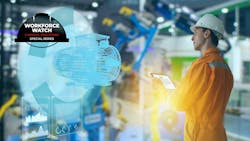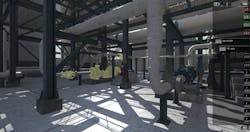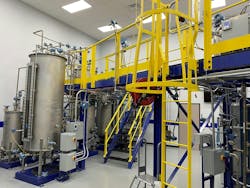Operator Training: Tap New Ways to Boil Down Experience
Unlike the movie “Field of Dreams, the “build it and they will come” approach doesn’t always work. Trainers may not use the tool effectively or even use it at all.
I was about to have an operator explain his response to a momentary power failure. “What am I supposed to do?” he asked.
I told him to just show me how he would handle the situation. His continued reluctance made me suspect he was unsure of what actions he was supposed to take.
A little taken aback, I said, “I’m not a qualified operator on this unit, but usually, people secure the fired heaters first.”
He said, “OK,” and we headed off to the fired heaters.
Why did I know more about what to do than this first-year operator? I had more experience.
A colleague once told me that training was just condensed experience — the skills and knowledge that would take decades to learn are condensed and imparted in a relatively short period.
When I started in the process industries, training often consisted of a manual and shadowing an experienced employee.
But mass retirements have left a knowledge transfer gap that limits opportunities to learn directly from seasoned veterans.
To address this challenge, companies are increasingly turning to digital technologies as advanced training tools.
Key Takeaways
- Training Gaps and Digital Twins: With mass retirements creating knowledge transfer gaps, companies are using digital twins to simulate processes for operator training, offering a more structured and objective learning experience.
- Simulation Tools for Hands-on Learning: Advances in technology, such as 2D simulations, virtual reality, and plant walkthroughs, provide safe environments for operators to learn and practice without causing real-world disruptions.
- Just-in-Time and Microlearning: These approaches allow for immediate, relevant training and skill-building, reducing information overload and improving retention.
Digital Twins Gain Acceptance
First introduced in the 1990s, what we once called a simulator we now refer to as a digital twin. That’s because modern simulators address more than process control variables.
Digital twins enable operators to respond to various upsets and scenarios, seeing the effect of control changes on the process. Recent research by the Center for Operator Performance has shown that dynamic simulation is better at teaching a topic than extensive years of experience.
Digital twins can add a level of objectivity to training and qualification that has been sorely lacking in the industry. While operators can already practice with simulators, digital twins enable the creation of quantifiable drills.
More importantly, organizations can use digital twins to establish clear performance criteria. Consider this scenario: You could set a learning goal for a student to successfully stabilize a process within 20 minutes following a recycle compressor trip. This approach creates a concrete, quantifiable benchmark for measuring achievement.
If the trainee can’t meet the 20-minute target, then they need more training. Similarly, can the trainee spot the faulty valve in the middle of the refrigeration compressor trip within a specific timeframe? Areas where the student struggles become opportunities for trainers to intervene and provide targeted support.
Digital twins, which can vary in how closely they replicate the operators' actual process, have shown mixed results for operator training. Negative results usually stem from purchasing a digital twin without a program on how to use it.
The digital twin is a tool, not a complete solution—it needs to be integrated into the training program. Unlike the movie “Field of Dreams,” the “build it and they will come” approach doesn’t always work. Trainers may not use the tool effectively or even use it at all. Effective use of digital twins for training requires the development of learning objectives (measurable) and lesson plans to accomplish.
Simulated Plant Walkthroughs
Advances in computer graphics also have made it possible to simulate the plant itself. A variety of existing techniques are being employed at various locations, including:
2D Graphics
The student can walk through the unit and operate equipment, all from the safety of the training room. Operators don’t have to walk through the actual unit if they have it replicated on a PC. The field actions can be tied into the digital twin, allowing actual team training with a console and field operator. One system from Simtronics allows trainees to interact with the process equipment, either seeing it in first or second person, or even in a fly-over “drone” mode.
Virtual Reality
At the extreme end of simulation is the use of virtual reality (VR). Students see and walk through a plant in 3D. Handsets allow the student to manipulate valves and equipment. Yokogawa has developed VR simulations that operators can use remotely, allowing trainees to feel like they are in the plant while in the classroom (Figure 1).
Beyond Technology: Hands-on Simulation
Ideally, students would have access to the actual equipment with which they will be working. The U.S. Department of Energy’s Savannah River Site in South Carolina produced plutonium for the U.S. government for years. The plant’s management team had a complete duplicate of one of the nuclear reactors dedicated solely to training.
Since this is not practical in most instances, some companies have dedicated portions of the plant for learning. One such facility is operated by Emerson. At its training center outside Minneapolis, students can manipulate processes and process instrumentation without fear of causing a major upset (Figure 2).
The Dry Run: Scenario-Based Training
Simulations are inherently a form of scenario-based training, but there are other training tools that use scenarios without the cost of a simulator. Several plants conduct decision-making exercises focusing on the cognitive activities that occur before or during an event.
Research from cognitive psychologist Gary Klein has shown that most problems in human error are due to poor diagnostics — choosing the wrong course of action — rather than an inability to implement the action.
Scenarios are presented and stopped at crucial points to ask trainees what decision they would make. This decision is then compared to the choice made by experts. The basis for that decision, from both novice and expert, is presented, so the novice can see the world through the eyes of the expert.
As Klein has often said, “Experts don’t just know more; they see things differently.”
Drip Learning vs. The ‘Firehose’ Approach
Much of current training has been described as a firehose approach to information transfer. Students are brought in for classes. Everything that they are ever expected to learn is given to them in a few short days. The information hits them like the flow from a firehose, with the hope they retain enough of the material to perform the tasks safely and successfully.
A few companies have at least tried to hold off training on topics that are relevant for more advanced positions (i.e., console operator) until the operator is attempting to qualify for that position.
With operators now using handheld computers, training no longer needs to be confined to classrooms or conducted during overtime hours. Small learning exercises can be delivered to the students, enabling them to learn the material uncluttered by the mass of other information being given to them at the same time in traditional courses.
The microlearning exercises can be timed with advancements to other positions and contain unit-specific information.
Just-in-Time Training
“I remember being told something about this, but what was it?” How often have we said that in real life? I often say it the day after I’ve looked up something. Learning is most effective when it is immediately applicable.
This approach makes the information more relevant and reduces the likelihood of it degrading or being forgotten. Many of us have used just-in-time training with YouTube how-to videos.
This type of training can be done before a particularly complex task or even during the task. The need for an operator to guess at the required action —told to them months before — is no longer necessary. One company has installed QR codes on all its equipment, from which the operator can access information, such as procedures, specs and training videos.
Beyond The Classroom
Condensing experience so that it can be transferred to trainees has become much easier. No longer are students expected to absorb massive amounts of static information in a classroom setting.
Simulation technologies enable the trainee to interact with the process in several ways, providing the practice missing from previous generations of training programs.
The training can be spread out. Critical knowledge will not be lost because the trainee was overwhelmed by the volume of what was to be learned, and that critical knowledge can be presented when it will be most effective.
In Case You Missed It
This article is the third in a five-part series, "Chemical Industry Workforce: Shaping Tomorrow's Talent." Check out the other installments below.
No time to read and prefer to listen? Check out the podcast on Defiing DEI.
About the Author
David Strobhar, PE
David Strobhar founded Beville Operator Performance Specialists in 1984, which conducts human factors engineering analyses of plant modernization, operator workload, and alarm/display systems for such companies as BP, Phillips, Chevron, Shell, and others. Mr. Strobhar was one of the founders of the Center for Operator Performance, a collaboration of operating companies, DCS suppliers, and academia which researches human factors issues in process control. He is the author of Human Factors is Process Plant Operations (Momentum Press) and was the Rationalization clause co-editor for ISA SP18.2, Alarm Management for the Process Industries. Strobhar has a degree in Human Factors Engineering and is a registered professional engineer in the state of Ohio.



